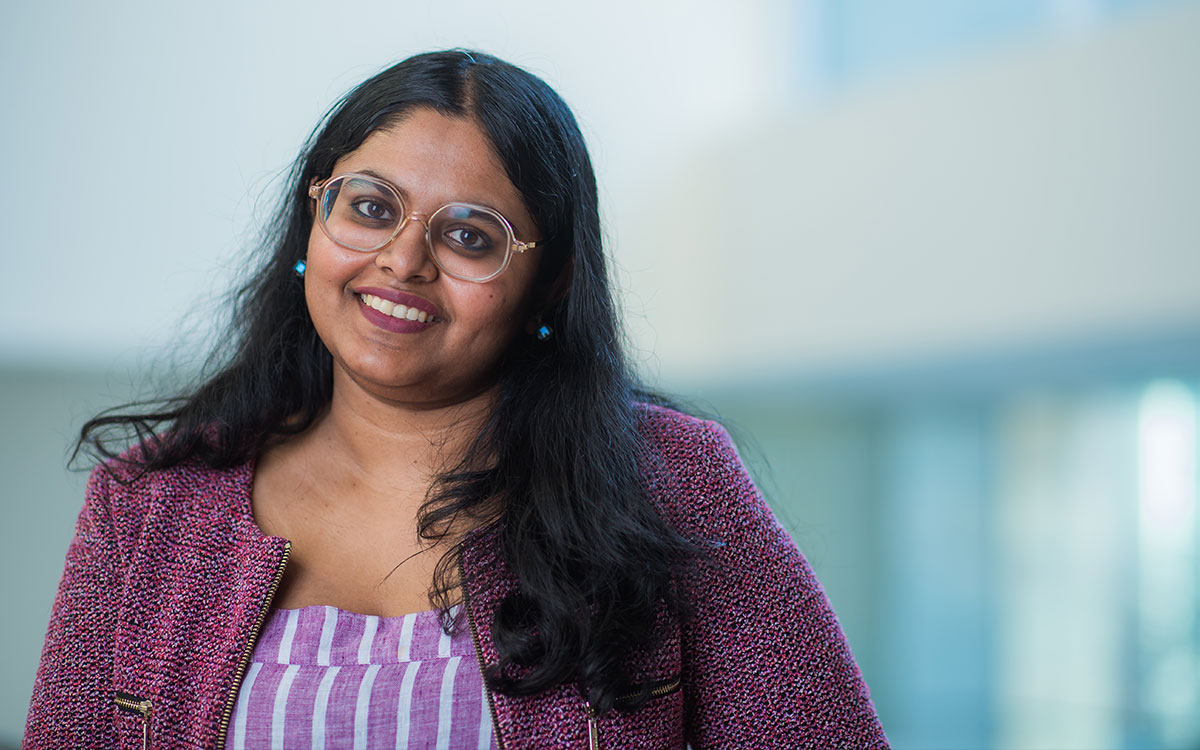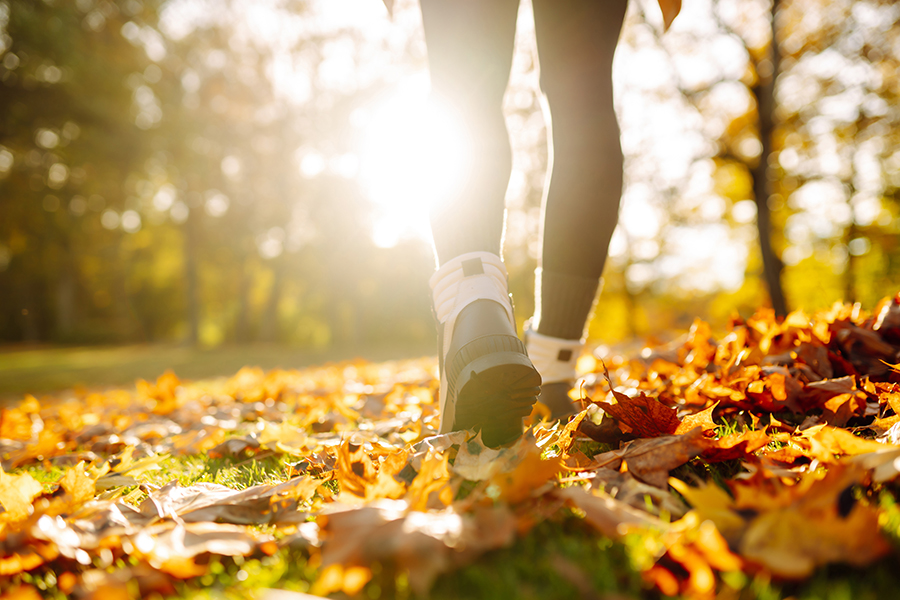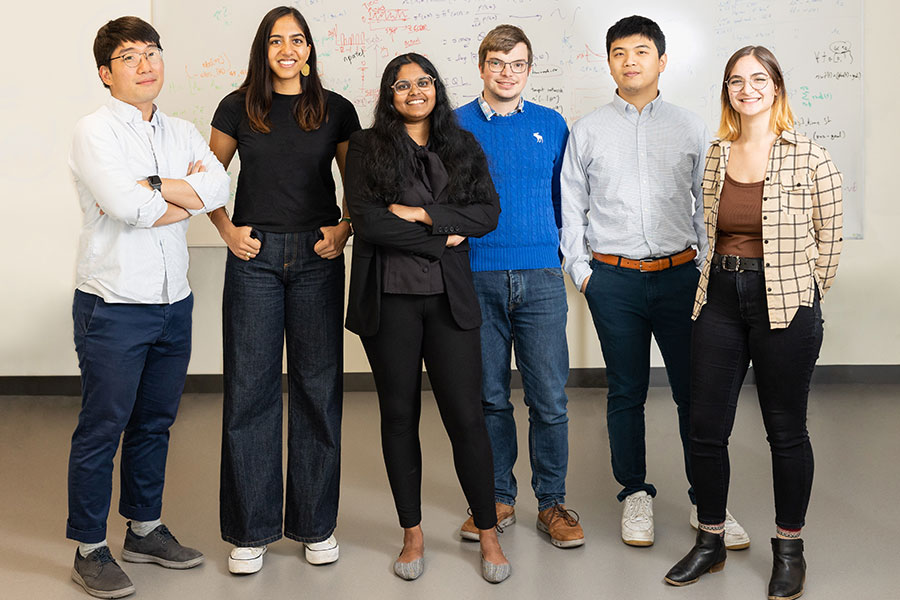Science in Motion
The computational models that Seethapathi builds in her lab aim to predict how humans will move under different conditions. If a person is placed in an unfamiliar environment and asked to navigate a course under time pressure, what path will they take? How will they move their limbs, and what forces will they exert? How will their movements change as they become more comfortable on the terrain?
Seethapathi uses the principles of robotics to build models that answer these questions, then tests them by placing real people in the same scenarios and monitoring their movements. Currently, most of these tests take place in her lab, where subjects are often limited to simple tasks like walking on a treadmill. As she expands her models to predict more complex movements, she will begin monitoring people’s activity in the real world, over longer time periods than laboratory experiments typically allow. Ultimately, Seethapathi hopes her findings will inform the way doctors, therapists, and engineers help patients regain control over their movements after an injury or due to a movement disorder.
More Research
Seethapathi’s team is also researching how movements change as a person becomes familiar with an environment or a task. To those ends, they are building models to learn how people behave when they must move in a new way or navigate a new environment. “In these kinds of conditions, people eventually wind up on an energy-efficient solution,” she says. “But we’ve shown that, initially, they pick something that prevents them from falling down.”
To capture the complexity of human movement, Seethapathi and her team are devising new tools to monitor people’s movements outside the lab. They are also drawing on data from other fields, from architecture to physical therapy, and even from studies of other animals. The goal is to arrive at general principles of movement that cross timescales and species.
Biography
Nidhi Seethapathi joined the McGovern Institute as an associate investigator in 2022. She earned her PhD in mechanical engineering from Ohio State University. There, she developed predictive models of naturalistic human locomotion as a Schlumberger Foundation Faculty for the Future Fellow and conducted research as a graduate research assistant in the Movement Lab. She then worked as a postdoctoral researcher in bioengineering and neuroscience in the Kording Lab at the University of Pennsylvania developing data-driven tools for autonomous neuromotor rehabilitation, in collaboration with the Rehabilitation Robotics Lab.
Honors and Awards
Ohio State University MAE FAST Fellow, 2017
Schlumberger Foundation Faculty for the Future Fellow, 2015





